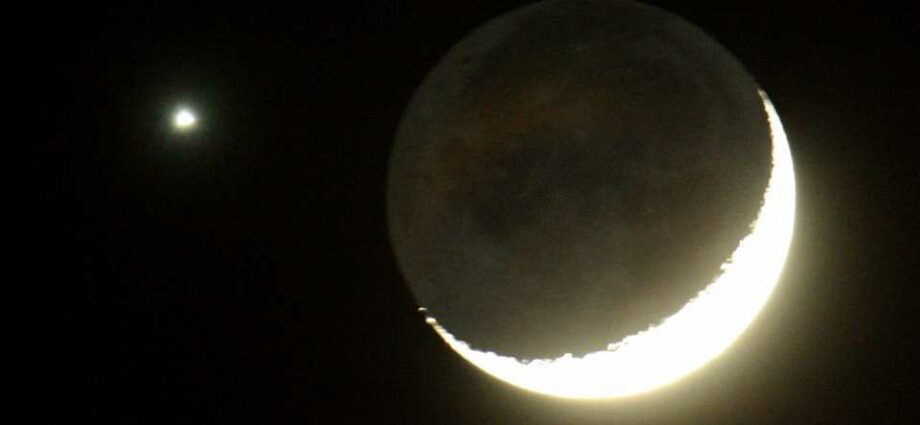SOME many have noticed a particularly bright star situated close to the moon when they gaze into the night sky.
And some wonder what exactly the star by the moon is and why is it so bright? Here's everything you need to know.
What is the star by the moon?
The bright light that stargazers have noticed isn’t actually a star, despite sometimes being referred to as the Evening Star.
It's actually the planet Venus and it's the second closest planet to the sun.
In the first week of the Moon's 27-day orbit of Earth, it glides past multiple planets, causing spectacular night sky vistas immediately after sunset.
It tends to be most visible in November to December.
However as it is the third brightest object in the sky – it is most visible after sunset or before sunrise.
The planet is also creeping closer to Earth, making it incredibly easy to spot.
Why can we see Venus so clearly?
The reason we see Venus so clearly is because it is closer to the Sun than Earth, so it orbits inside Earth’s path.
Read More on Space

Why did NASA stop exploring the ocean?

What colour is Saturn?
The planet orbits the sun every 224.7 days.
When it is on the far side of the Sun, Venus can’t be seen, but as it comes round, getting closer to Earth, it becomes brighter and brighter as it reflects light from the Sun.
Less of the planet can be seen the closer it gets to Earth, but due to it being nearer it will seem larger in the sky.
As it gets closer to us it is visible in the evening, then when it passes its closest point and moves away again it is visible in the morning.
Most Read in Science

A look at why the sky appears blue

Real reason Beethoven died revealed after analysis of composer's hair

Entire skeleton of Tyrannosaurus rex set to fetch eye-watering sum at auction

Our ewe gave birth to lamb triplets… but there was a bigger shock to come
Venus’ brightest point is known as its “greatest illuminated extent” – when it is getting closest to us, without being directly between us and the Sun.
What is the latest news about Venus?
In June 2021, three new missions to Venus were announced.
NASA announced they would be setting up two missions and The European Space Agency announced they would be setting up the other.
On February 9, 2022, NASA announced that the Parker Solar Probe spacecraft had captured its first visible light images of the surface of Venus from space during its February 2021 flyby.
Possible evidence of alien-life lurking on the planet has also lead to further missions being announced – in 2029, The DAVINCI+ mission is set to forge through space for six months until arriving at Venus.
In an exclusive interview with The Sun, Dr. James Garvin, the principal investigator for the DAVINCI+ mission to Venus said: “That quest for habitability is part of our search for signs of life in the Nasa framework.
''We can all dare to hope.”
The DAVINCI+ mission will be equipped with special cameras to see through the thick atmosphere and additional technology to measure the chemical content of that atmosphere.
However, when DAVINCI+ arrives a second mission will already be in place – VERITAS is another NASA-led initiative.
Dr Anthony Freeman, a program manager at the NASA Jet Propulsion Laboratory told The Sun in an email: “VERITAS will look for water vapor in volcanic plumes – if it detects any that will mean water can still be found in the interior of Venus.
“The verified discovery of volcanic activity would rewrite history for our sister planet.”
Although both projects are years away – they hope to finally answer the question of whether Venus was once habitable or not.
Source: Read Full Article
-
Police pinpoint exact minute car carrying five friends crashed off road killing 3 and leaving 2 fighting for their lives | The Sun
-
Powerball jackpot climbs into the $700 million range
-
Putin’s navy captain Stanislav Rzhitsky ‘assassinated’ on morning run after launching deadly missile strikes in Ukraine | The Sun
-
Leeds students urged against using 'he' to mean people in general
-
Philippines is rocked by SECOND huge earthquake in 24 hours


